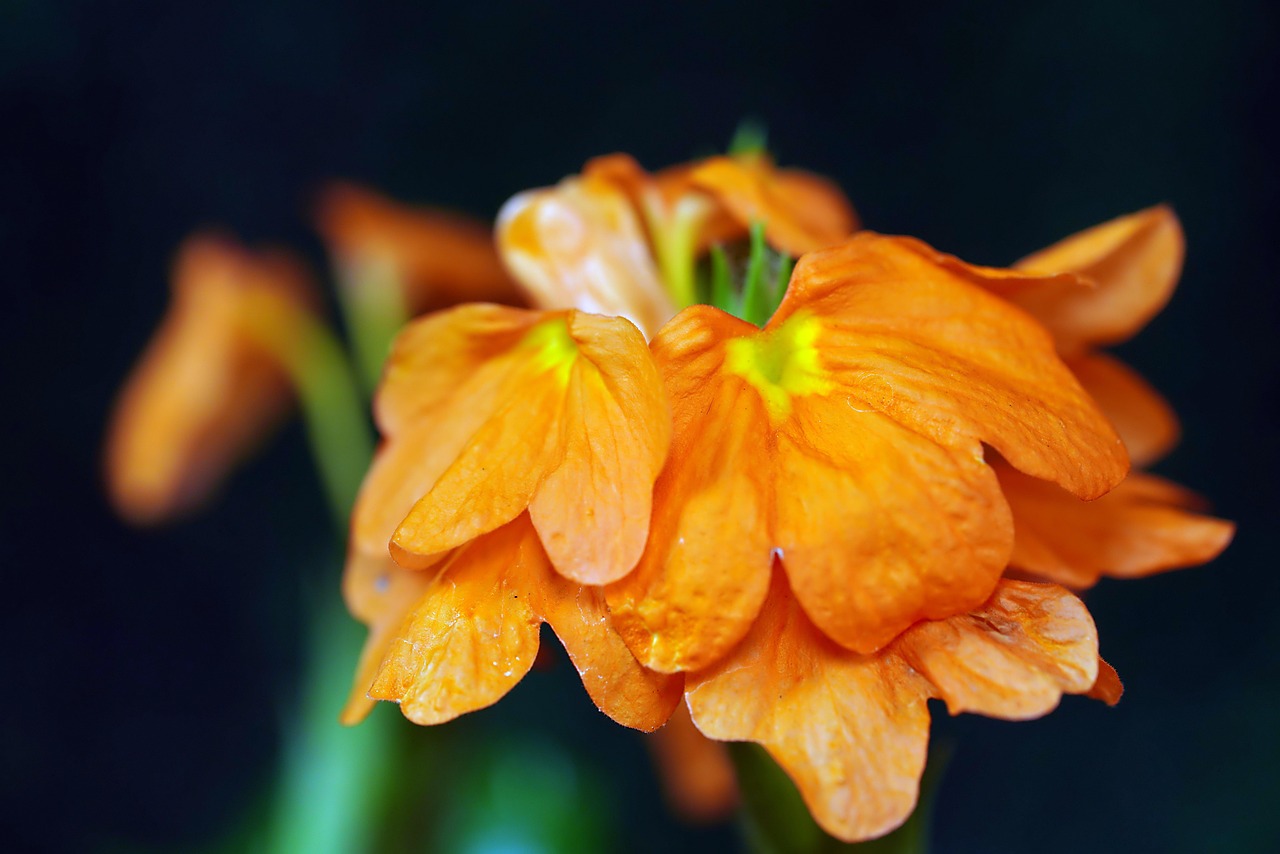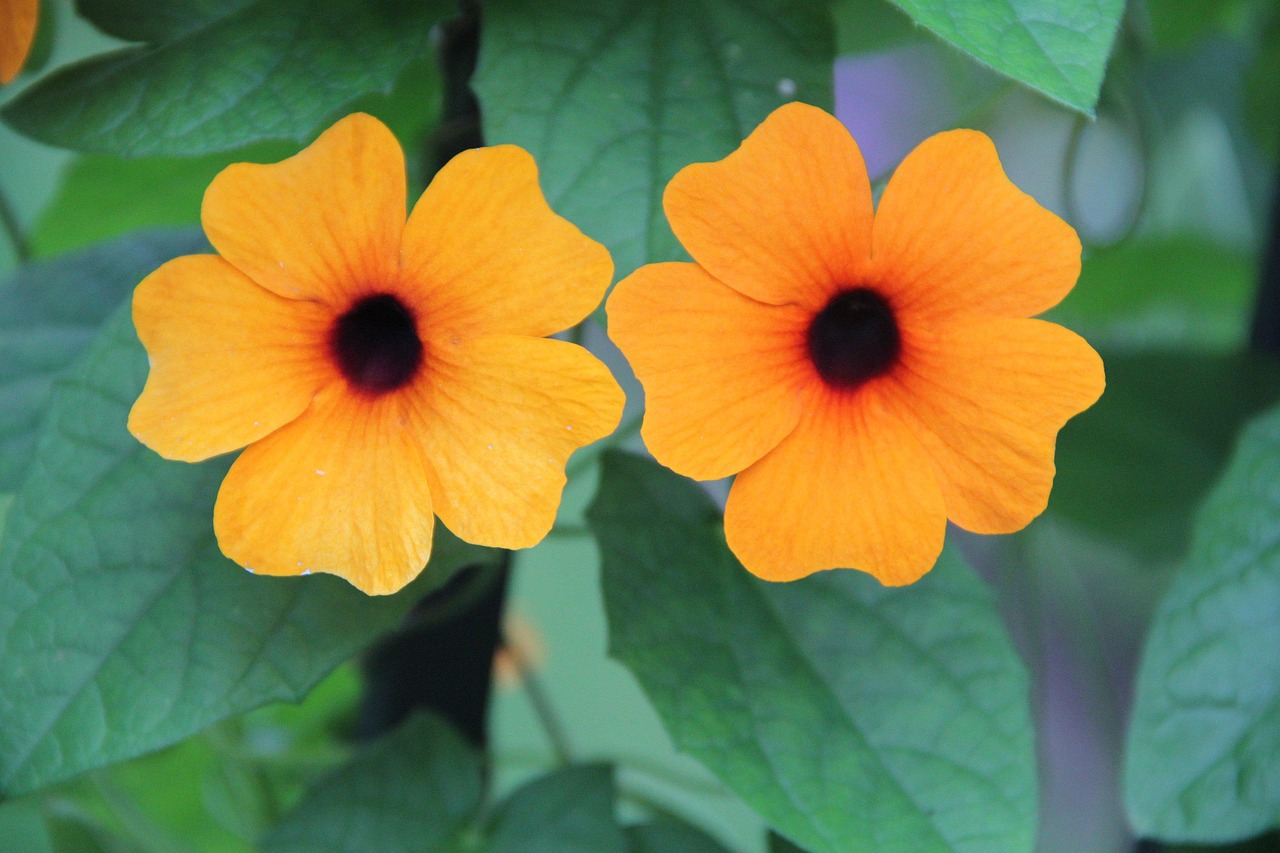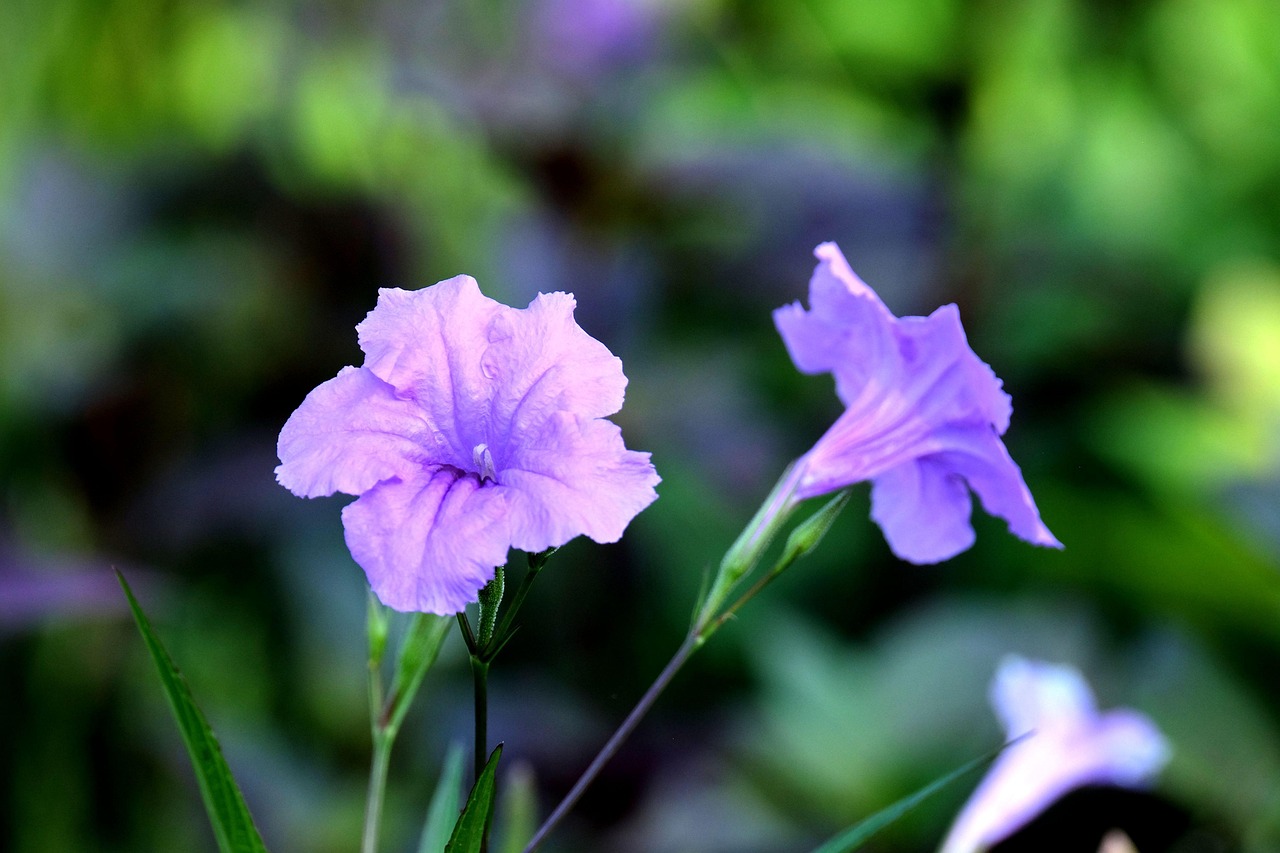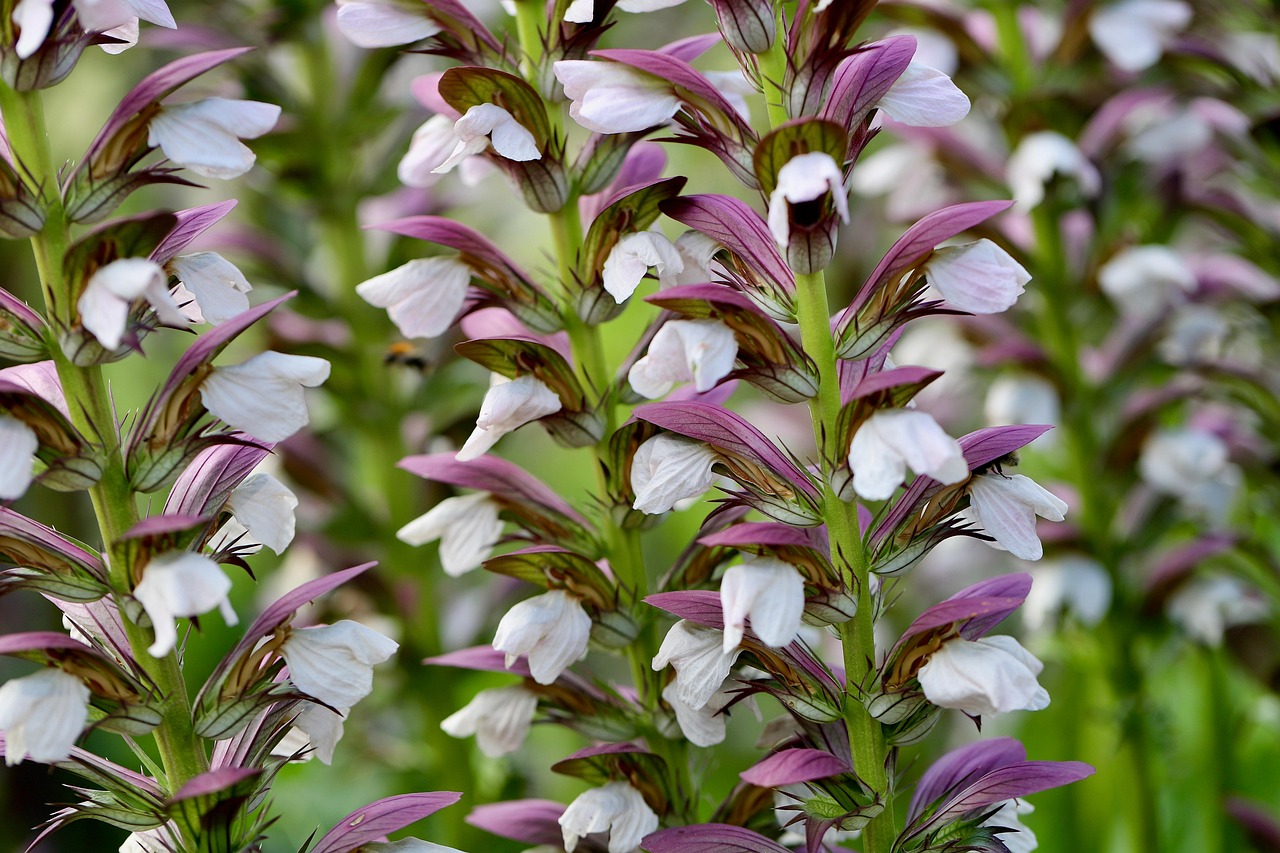Pachystachys | A Golden Bract Symbolizing Tropical Culture
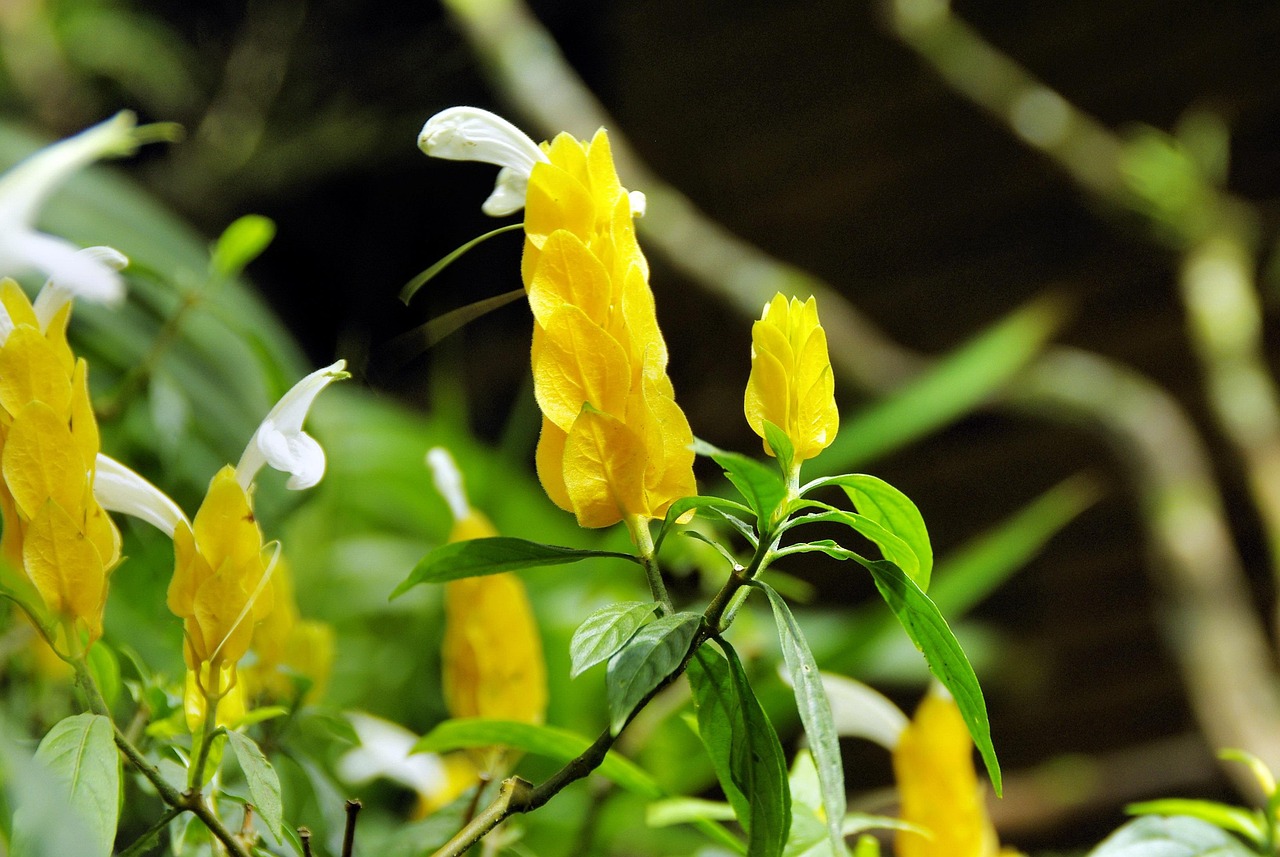
Pachystachys is a tropical flowering shrub distinguished by its vivid yellow or red bracts. Its unique shape and striking colors make it highly valued as an ornamental plant.
In this article, I will provide detailed information about Pachystachys, including its basic characteristics, cultural and historical background, and tips for successful cultivation.
Basic Information
- Scientific name: Pachystachys lutea
- Family: Acanthaceae
- Origin: Central and South America (Peru, Brazil, Colombia, etc.)
- Appearance: Long stems produce brightly colored bracts, from which white flowers emerge. The yellow variety is the most common and is also known as the “Golden Shrimp Plant.”
- Blooming season: Blooms for an extended period from spring through autumn.
Cultural Characteristics Around the World
Pachystachys, with its bright appearance and long-lasting flowers, is cherished as an ornamental plant in many regions.
In Central and South America, it is often planted in traditional gardens and public parks, especially in Peru and Brazil, where it is highly popular as a decorative species.
In Europe, greenhouse cultivation spread from the 19th century onward, and the plant began to appear in aristocratic gardens and botanical displays.
In recent years, it has also attracted attention as a houseplant. In warmer regions, it is grown outdoors, while in colder climates, it is cultivated in pots.
In Asia, particularly in tropical Southeast Asia, it is commonly used as a garden or park tree. Its bright yellow and red bracts often symbolize good fortune and prosperity.
Historical Background
Pachystachys was introduced to Europe between the late 18th and early 19th centuries.
Explorers and botanists discovered it in the tropical rainforests of South America, and its striking beauty quickly attracted attention. It soon became a favored ornamental plant.
By the 19th century, it was cultivated in the greenhouses of England and France, adorning the splendid gardens of the Victorian era.
In the United States, it became widely planted in Florida and California during the early 20th century, establishing itself as a common garden shrub in warm climates.
Gardening Advice
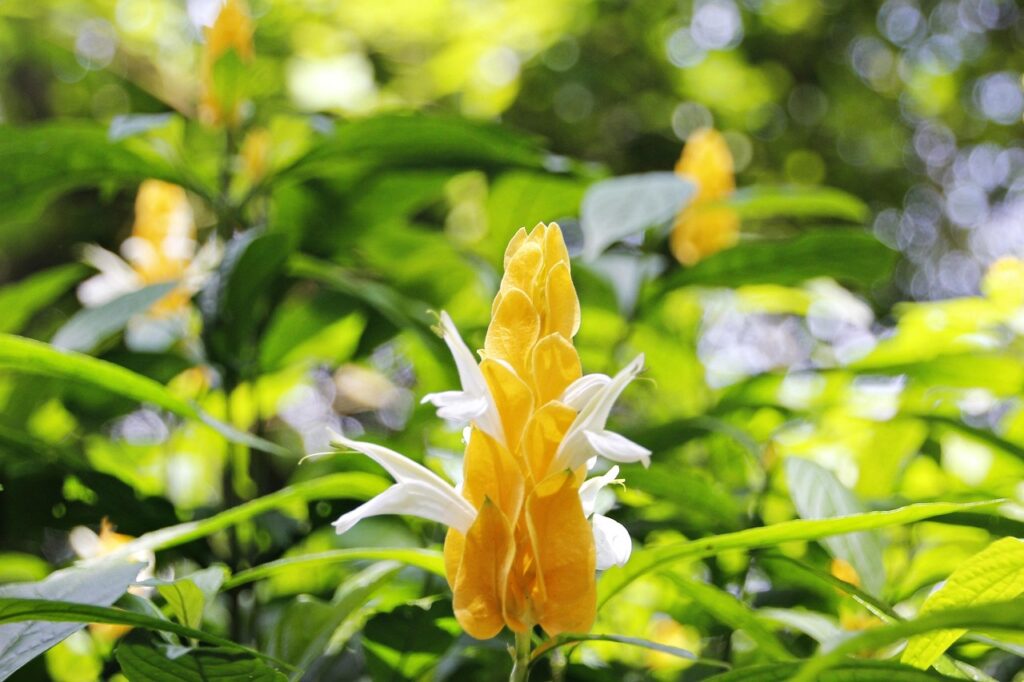
With proper care, Pachystachys can reward you with long-lasting, vibrant blooms. Here are some essential tips:
Light
Prefers bright partial shade. Excessive direct sunlight can scorch the leaves, so moderate shading is recommended.
Watering
Water thoroughly when the surface soil dries out. Avoid both drought and overwatering, as the plant is sensitive to both dryness and root rot.
Soil
Requires well-drained soil. A mixture of potting soil enriched with compost and perlite ensures both moisture retention and drainage.
Fertilizer
Apply diluted liquid fertilizer every two weeks during the growing season. Alternatively, use a slow-release fertilizer once a month.
Pruning
Trim the plant from spring to early summer to maintain shape, as overgrown branches can spoil its form.
Cold tolerance
Being tropical, it is sensitive to temperatures below 10°C. In winter, move it indoors and provide a warm environment.
Conclusion
Pachystachys, a tropical plant native to Central and South America, is admired for its vivid bracts that can be enjoyed for many months.
Since its introduction to Europe in the 19th century, it has become popular in greenhouses and gardens, and today it is cherished worldwide.
If you wish to bring a touch of the tropics into your home or garden, Pachystachys is a perfect choice.


